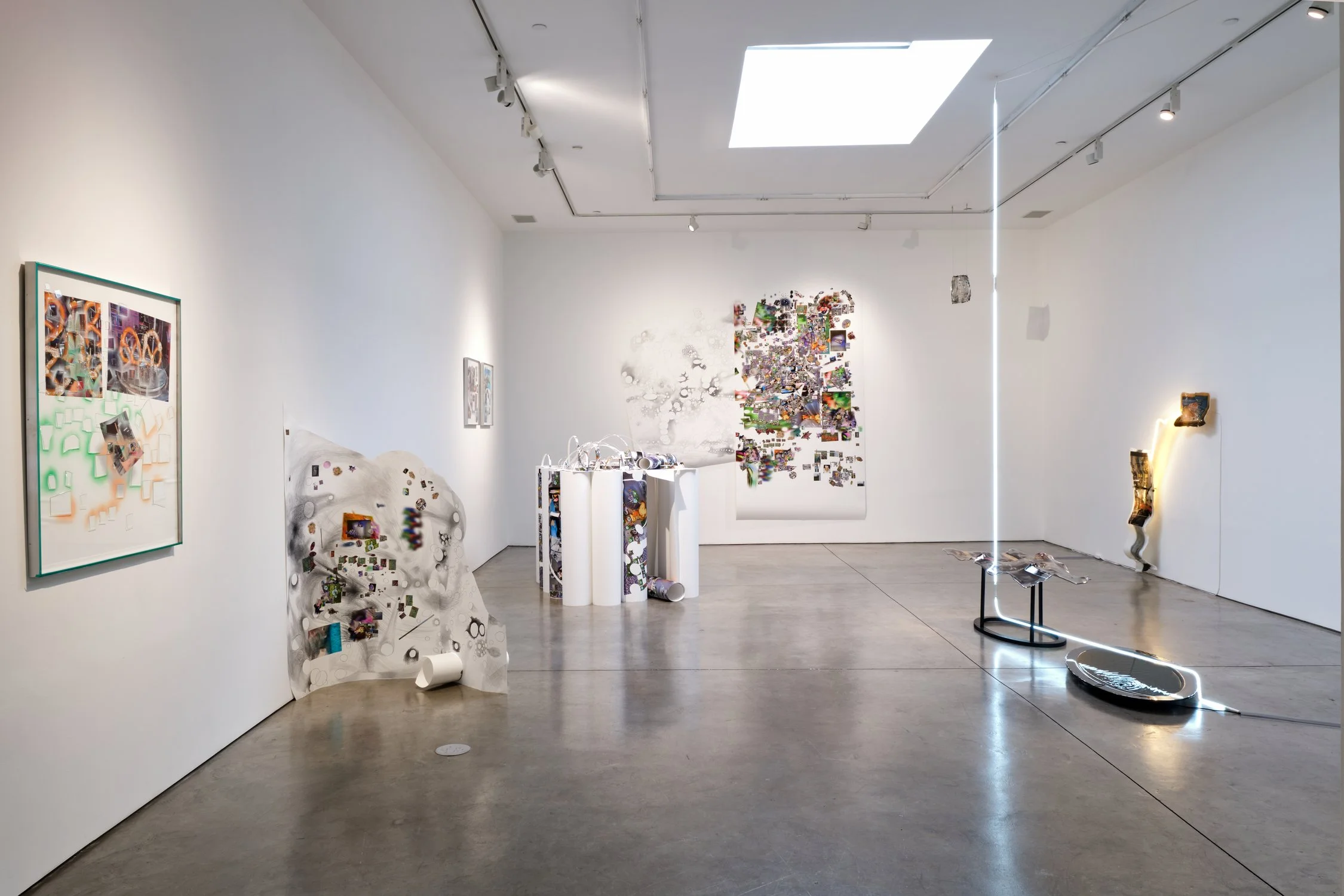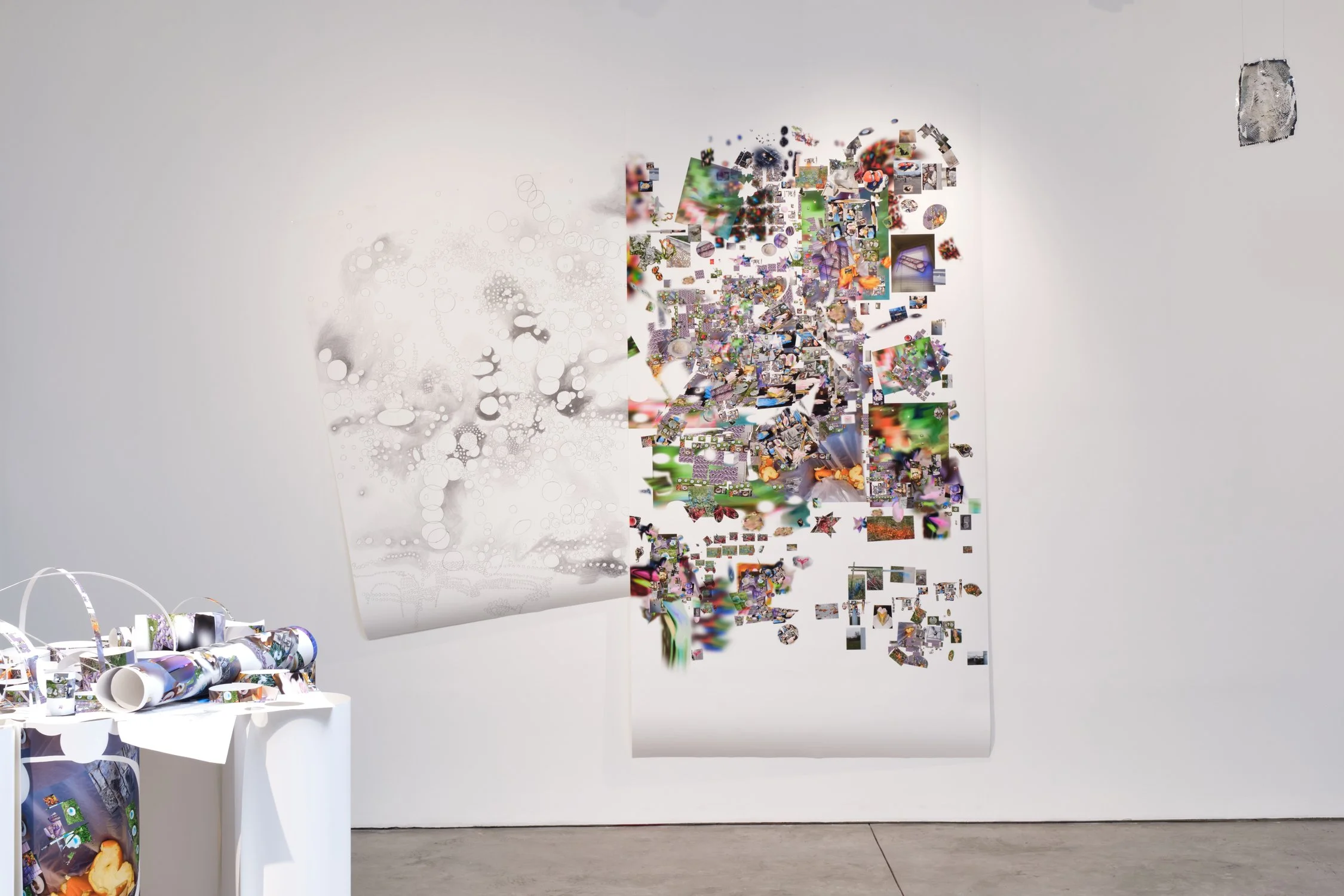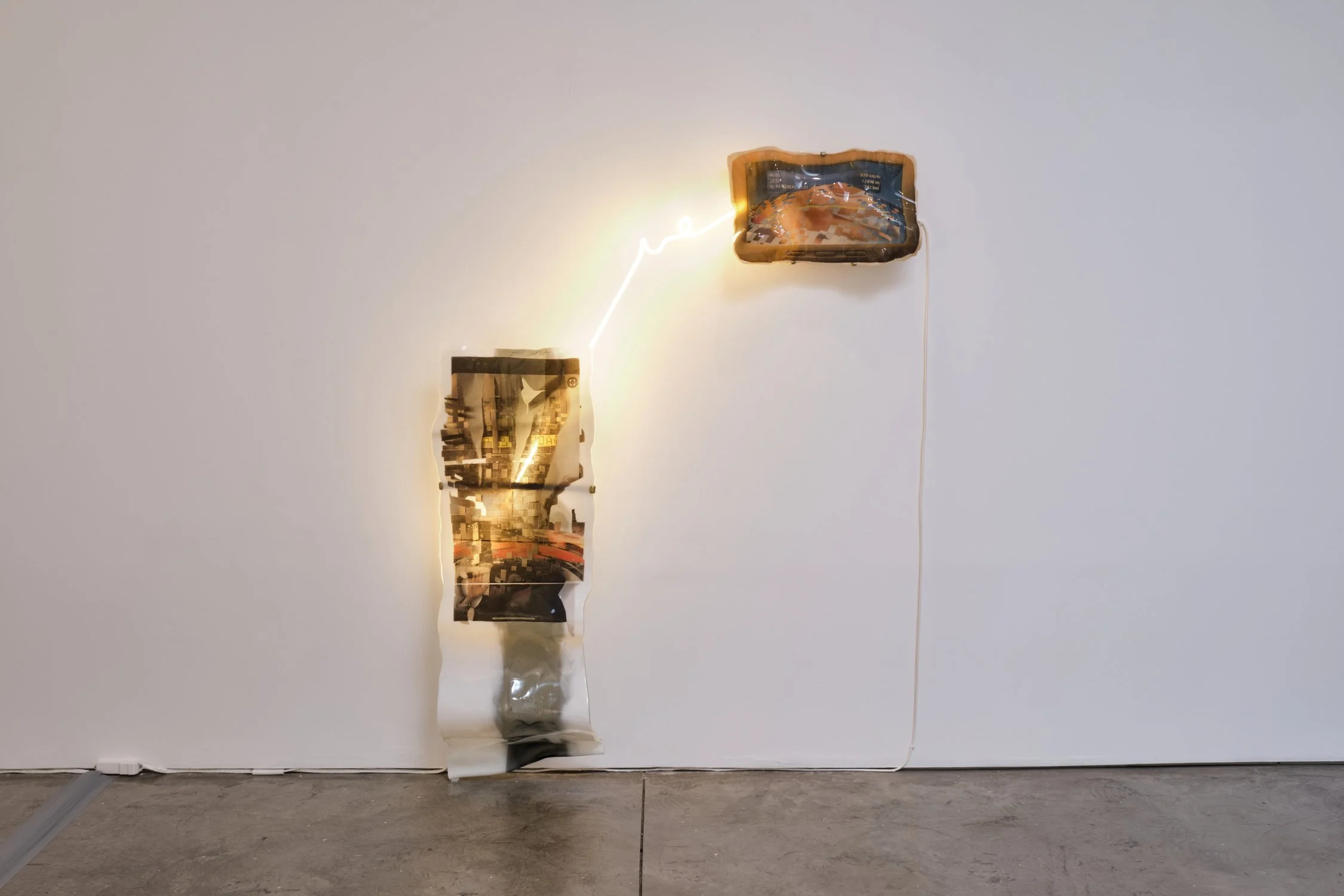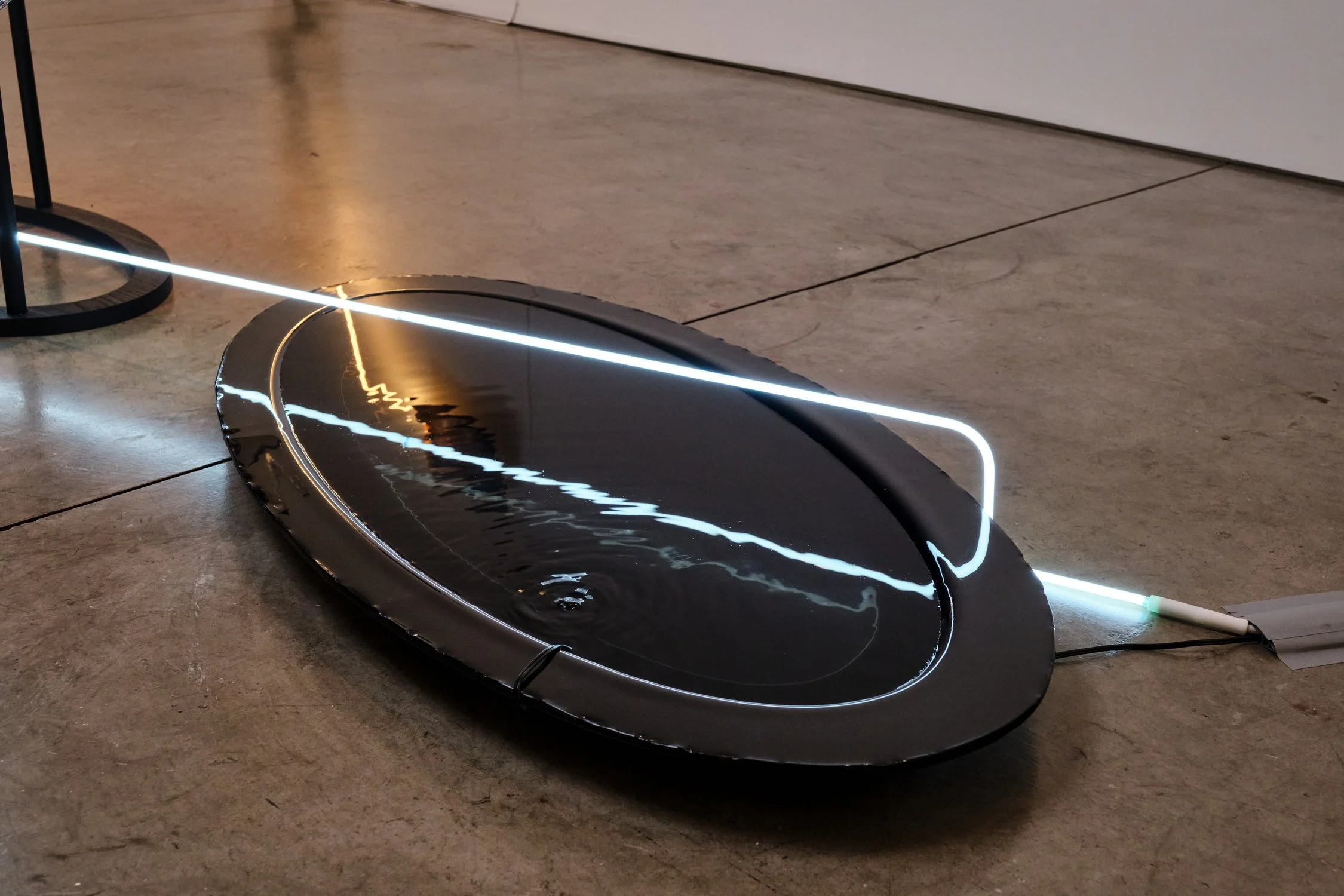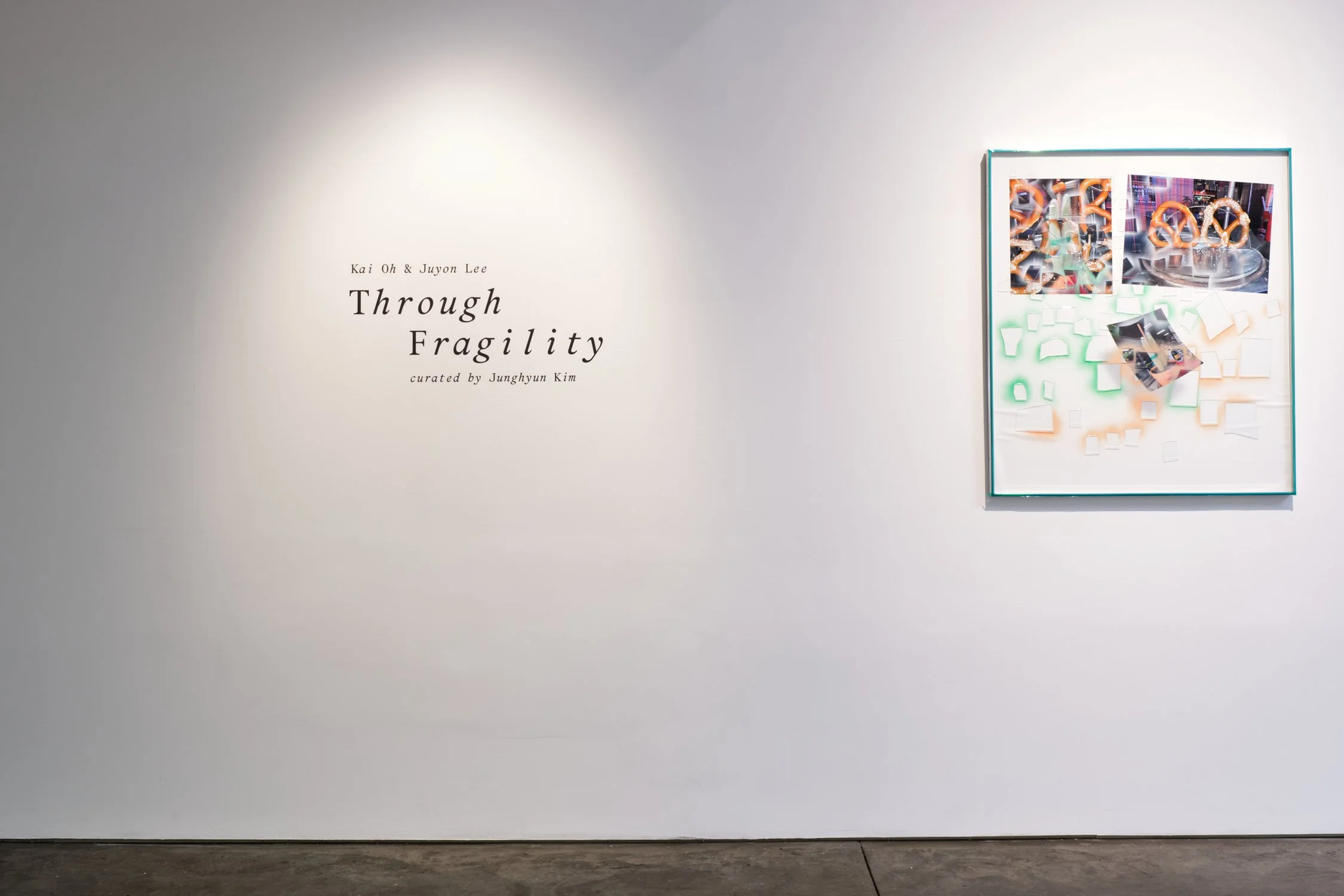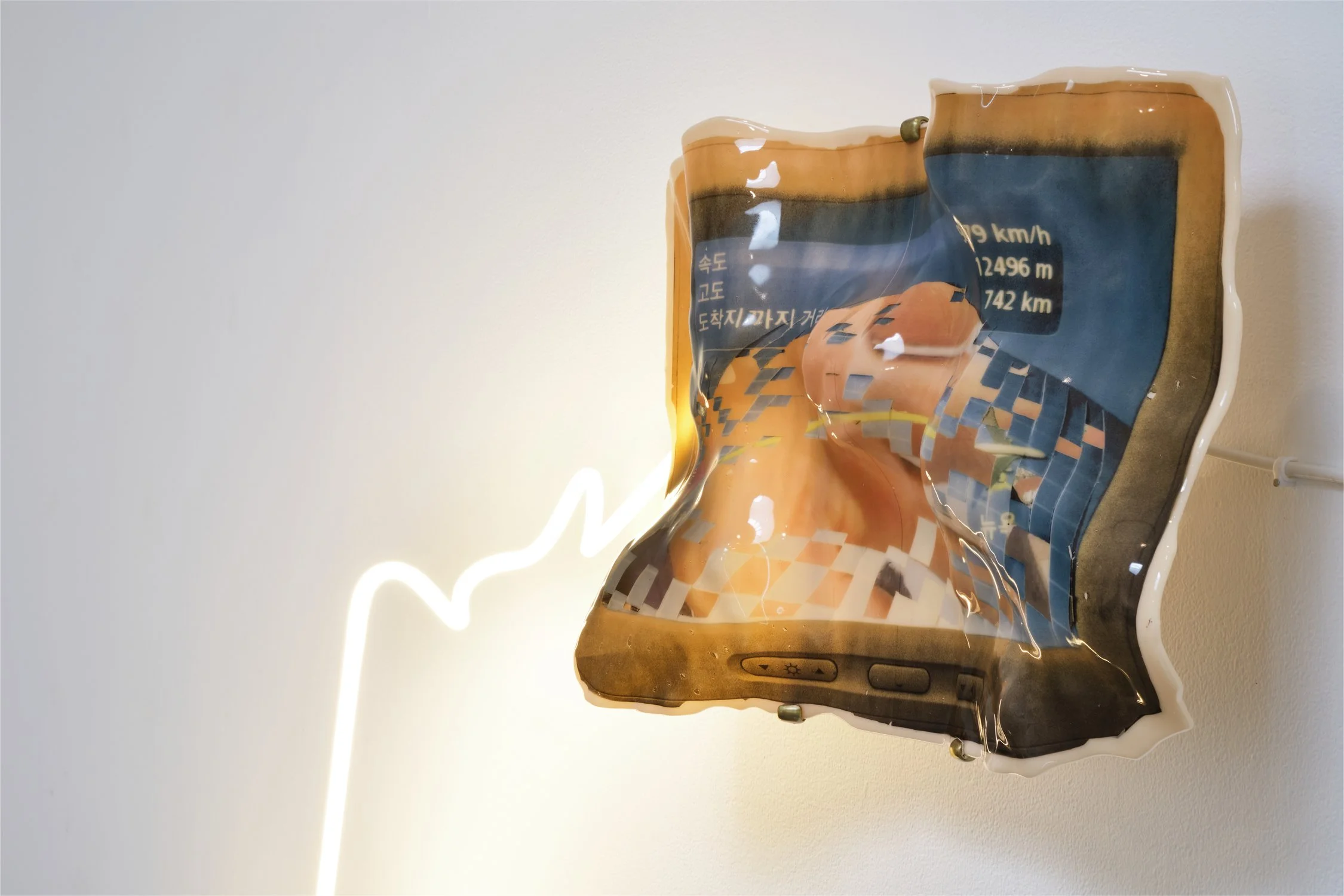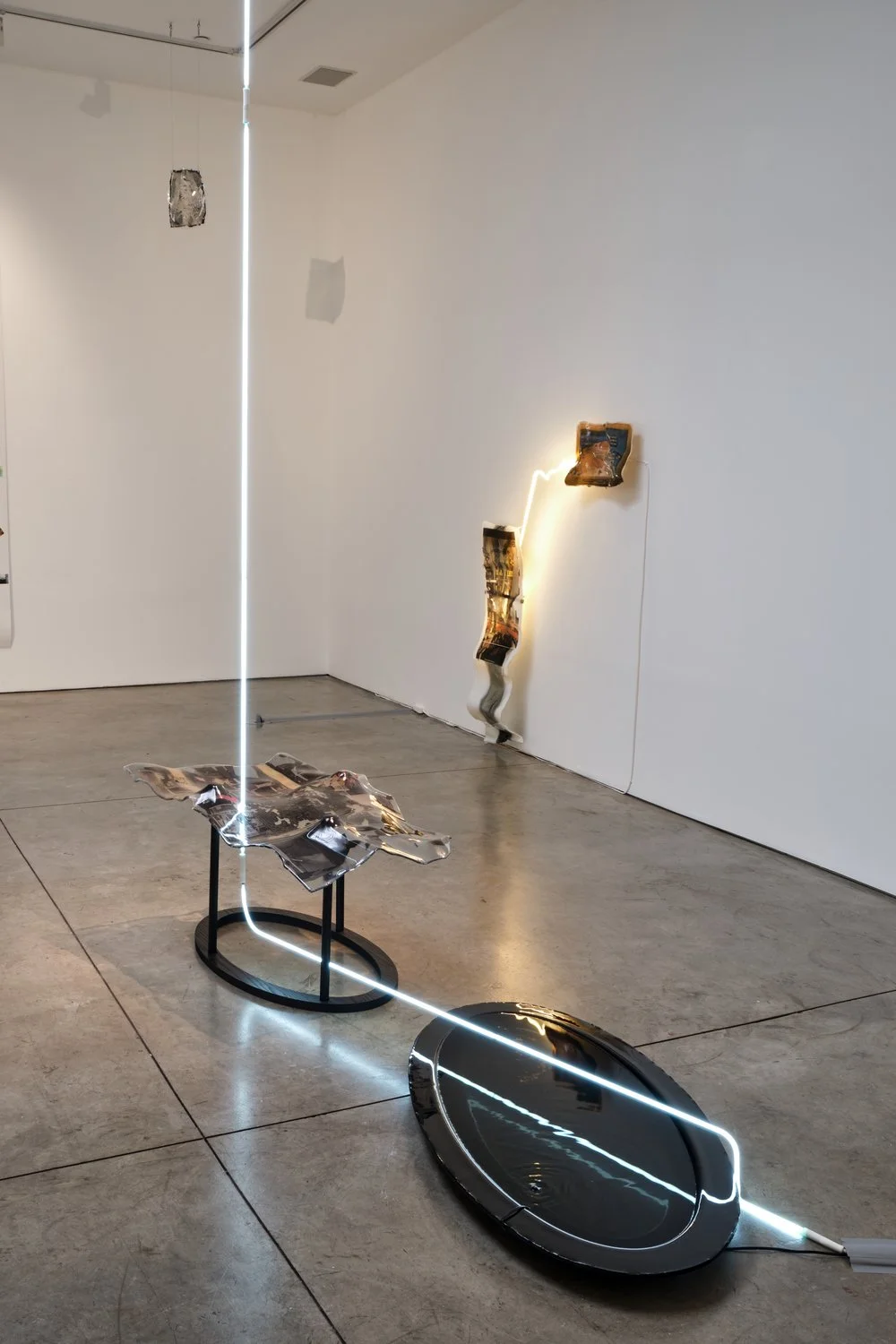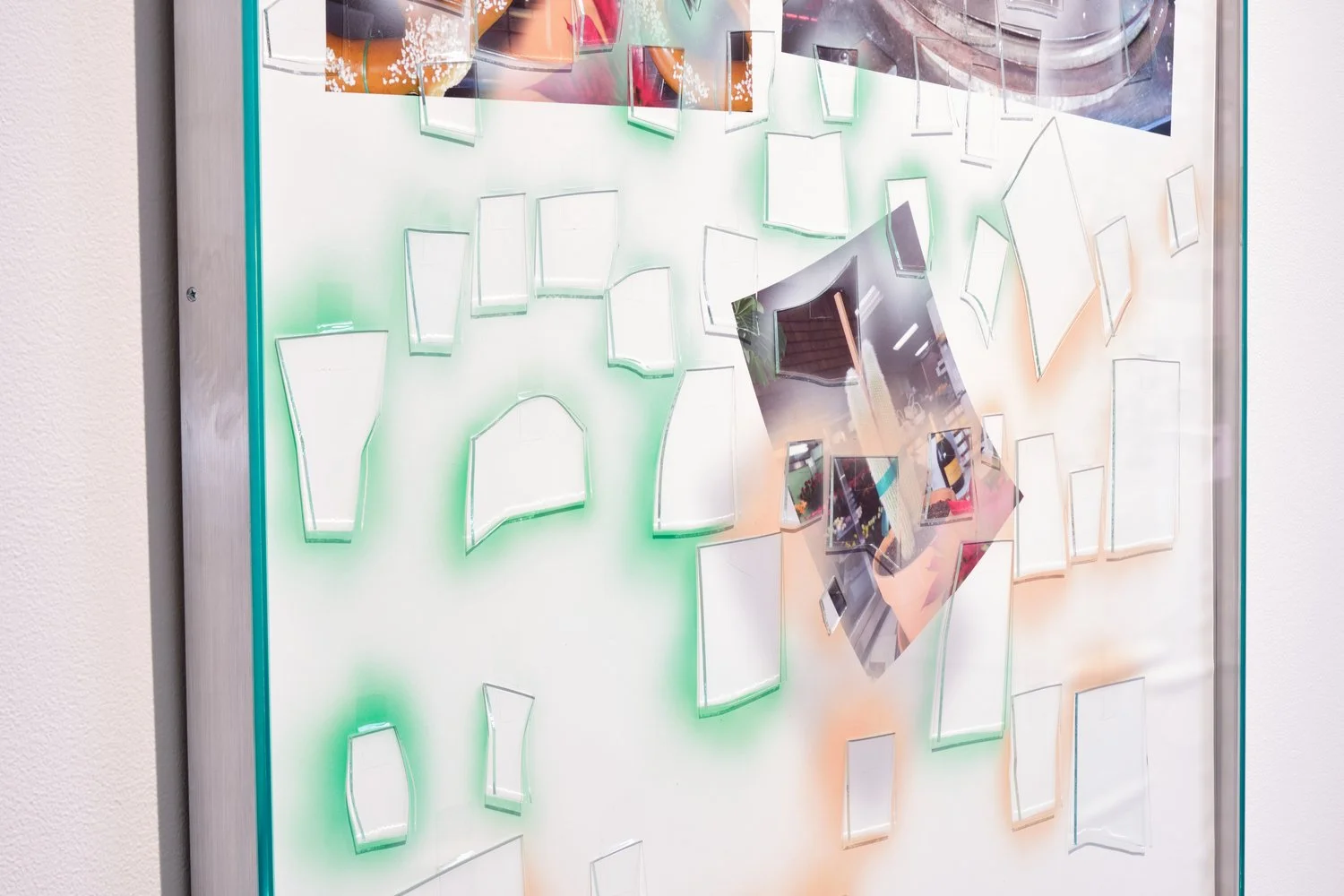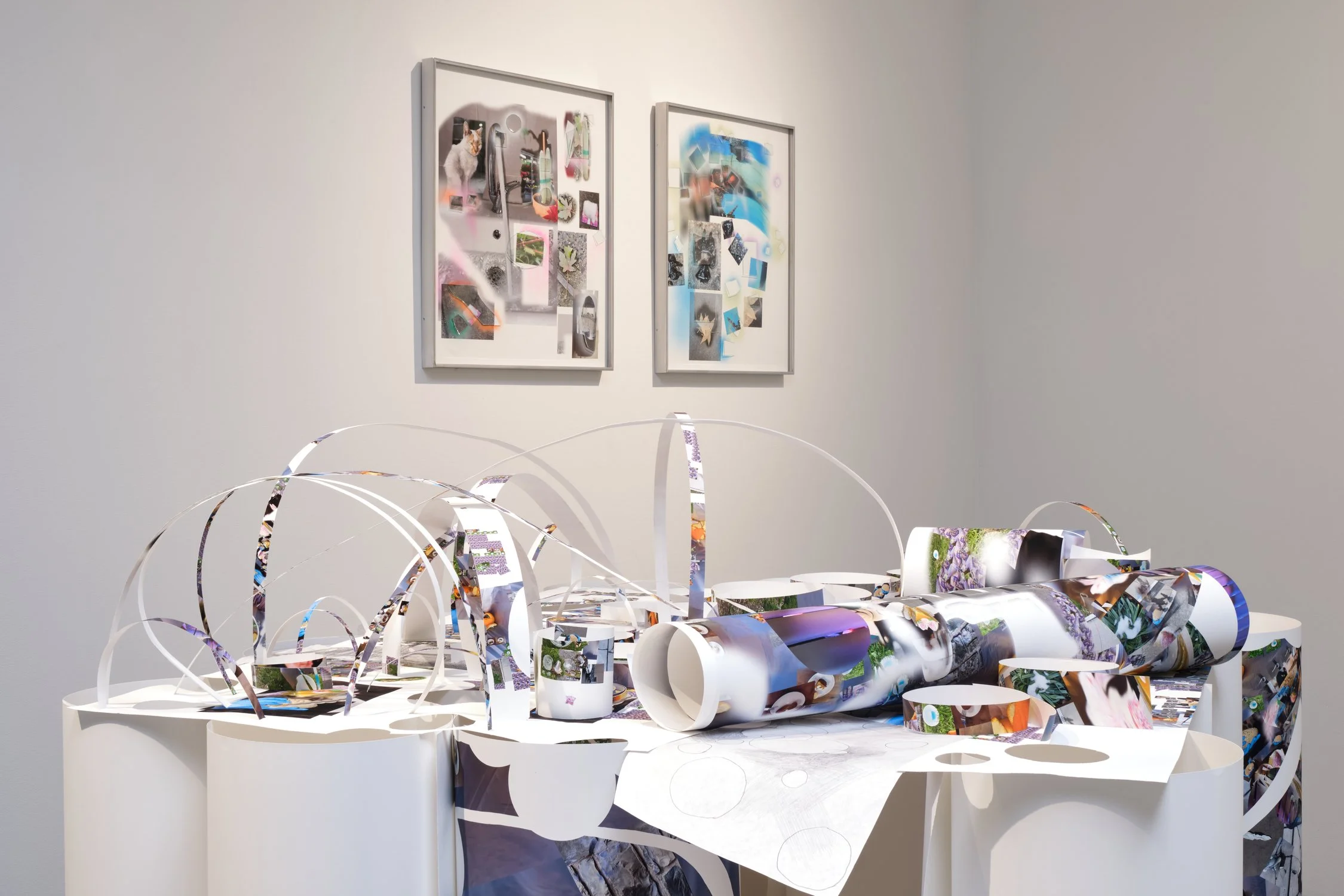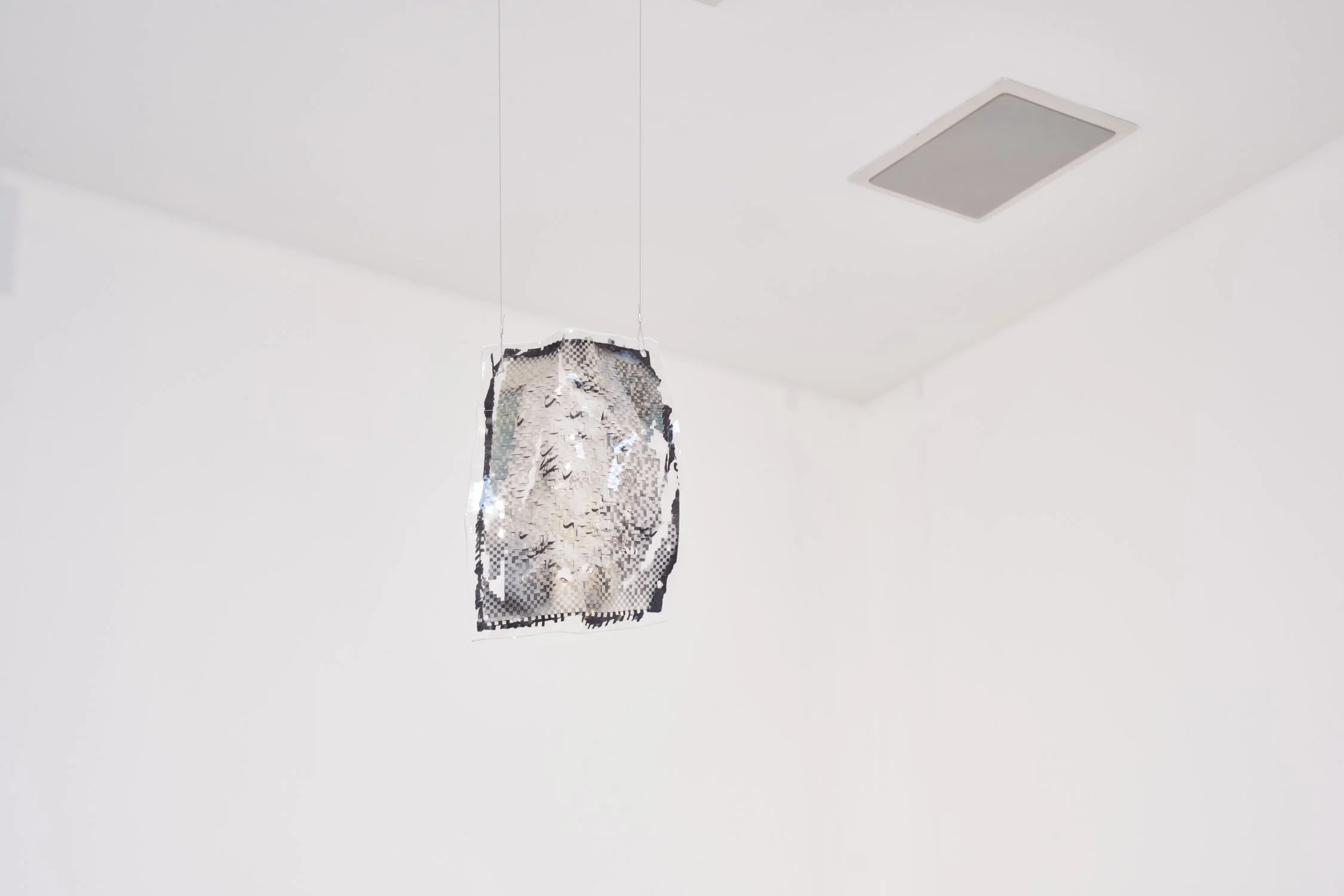Through Fragility
Baxter St at CCNY, New York, 2025
Selected by Baxter St at CCNY 2024-2025 Curatorial Open Call
-
Junghyun Kim
In the early history of photography, glass was essential not only as a medium for camera lenses but also as a protective surface in framing. This connection between photography and glass continues in the digital age, where smartphone screens serve as portals to our sensory worlds, integrating countless images into daily life. This exhibition draws on the material lineage, considering how glass—and fragility more broadly—resonates in contemporary image-making.
Through distinct approaches, Kai Oh and Juyon Lee come together in their reimagining of fragility as a generative space. Their shared identities as Asian women, immigrants, artists, and thinkers form a common layer of expression. The exhibition is informed by scholar Judith Butler’s idea that vulnerability, rather than a condition to avoid, is inherently relational, distinctly human, and vital to action. Recognizing human precariousness encourages ethical engagement through mutual connection.
In this exhibition, both artists present new work using glass, a delicate material that carries the dual qualities of transparency and protection, rupture and connection. Specifically, Oh examines the systemic vulnerabilities of human perception, easily affected by algorithmic mediation, while Lee engages with fragility as an ontological inevitability shaped by grief and memory.
Oh uses glass not only to support photographs but as an integral part of the image itself. She captures everyday scenes with her smartphone and manipulates them to introduce depth and movement. Her surreal compositions reflect on clarity and limitation. In her Double Glass Series (2024), Oh combines shattered glass with printed images to question the authenticity and completeness of digital media.
Her new work Vulnerable and Naked (2025) explores uniquely human modes of tactile, emotional, and sensory experiences that have been increasingly eroded under the influence of AI algorithms. Employing her primary method of photo collage, she shapes familiar patterns and dismantles them, drawing attention to homogenized images and perceptual systems within algorithmic structures. At the same time, she overlays pencil drawings onto digital images, imbuing the work with the tactile presence of the hand while introducing a sense of speed and dimensionality. In the process, concrete forms become abstracted and disparate sensations traverse the boundary between mass and the individual image. Through this, Oh fractures the biases by the system and gestures toward the possibility of being as a subject who thinks, senses, and creates within it.
Lee’s recent work begins with mourning the death of her grandfather. Unable to be physically present, she witnessed his final moments through a video call—an experience that led her to question the very meaning of being. Her new work, Weighing of the Light (2025), reflects on how, despite the human condition of mortality, that emerges in front of life’s cycle of birth and death. At the same time, it points to the way images today are easily transmitted via digital devices, stripped of weight, density and the social atmosphere they once carried.
In a similar vein, Parabolic Traces (2025) draws on images captured from video calls with family members who have been living afar. Through fragments of the everyday—text messages, screenshots and flattened bodily forms recorded in videos—the work visualizes the physical and emotional distance between Seoul and New York, revealing feelings of tenderness, longing, absence and loss.
Lee prints photographic images, cuts them into thread-like strips, weaves them by hand, and uses kiln forming techniques to apply the photographs to glass. This slow, labor-intensive process weakens the original form of the image, while simultaneously reinforcing its presence. By repeatedly exposing the photographs to high temperatures and turning them into glass, Lee reinterprets fragility not as a lack, but as a quality that is built up through time, care and labour.
Though glass may shatter under even a modest external force, it has long functioned as an inseparable part of photography, protecting the image while also transmitting light to make it visible. In this exhibition, that complex materiality becomes a generative element, allowing new qualities to the work of Oh and Lee and operating as part of the photographic body itself.
How far are we willing to accept such weakness? Can we acknowledge that, as individuals and as human beings, we are vulnerable, dependent, and always prone to collapse in the face of external forces, systems, or the laws of nature? We are easily broken, easily shaken, and may disappear at any moment. Yet it is precisely by recognizing this condition that we begin to look around, consider others, and search for ways of being together. Ultimately, this exhibition does not deny fragility but embraces it as a condition of life, and in doing so seeks to discover another form of strength, one that allows us to stand and sustain one another through our common fragility.
Support for Baxter St’s Guest Curatorial Program is provided by the Phillip and Edith Leonian Foundation.
-
Participating Artists
Kai Oh & Juyon Lee
Curated by
Junghyun Kim
Graphic Design
Kontaakt
Photographer
Lloyd McCullough
